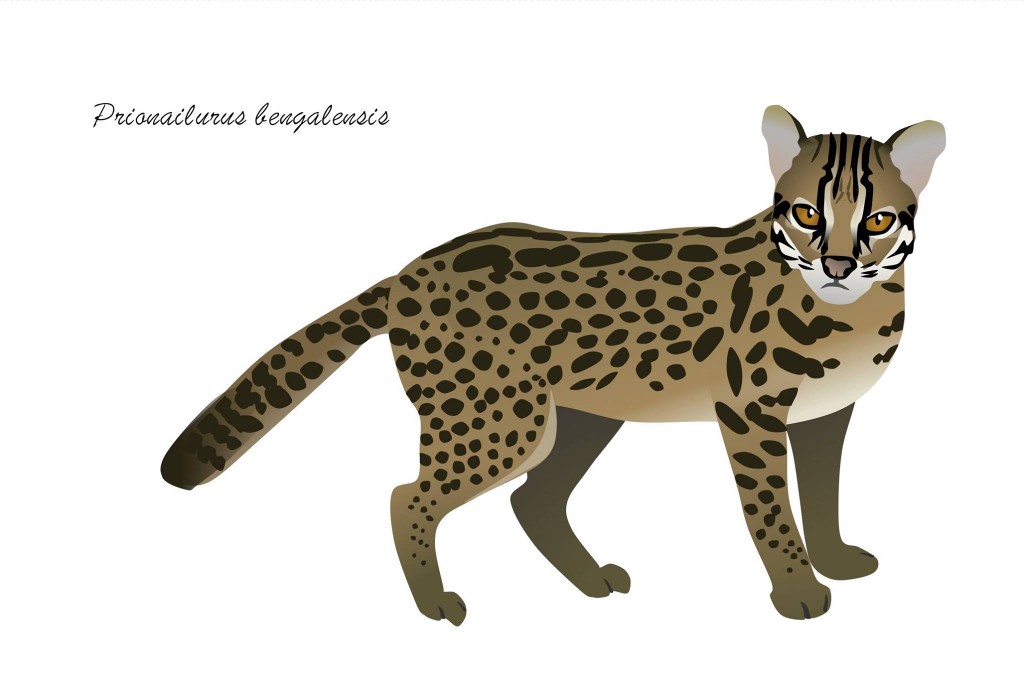Leopard cat (and other rainforest biodiversity) art by Loy Xingwen
I was brought to the attention to this artwork of Loy Xingwen by a colleague of mine, Jeremy Yeo.
This series of illustrations, including this beautiful leopard cat, was made using PowerPoint (Microsoft Corporation, Washington – [with ref. to this in Science]). PowerPoint! While the rest of us are struggling with re-sizing AutoShapes, he is creating these sleek layered and shaded masterpieces. He has kindly given permission for his artwork to be reproduced here.
Accompanying the image is a write up:
“This beautiful animal was once believed to be national extinct but a recent study has found that they are definitely still hanging on. Win! Nevertheless, they remain critically endangered in Singapore. Here, they are mainly threatened by the clearing of forests. The leopard cat is similar in size to a domestic cat and is a predator, hunting small animals such as rats, lizards and birds. Needless to say, it is very elusive and rarely seen.”
Xingwen is a plant ecologist at the University of Queensland, and started this project to raise awareness about Singapore’s natural heritage through his art. See the rest of the planned 40 rainforest biodiversity of Singapore art at his Facebook album here.


